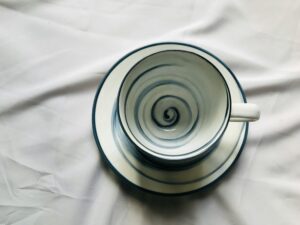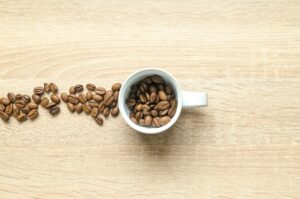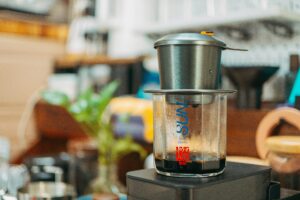When it comes to brewing the perfect cup of coffee, most people focus on the beans, water temperature, or brewing method. But what often gets overlooked is one of the most critical elements in the process: the coffee grind. The grind size of your coffee can make or break the flavor, aroma, and overall quality of your brew. Whether you’re using a French press, espresso machine, or pour-over, understanding the science behind coffee grinding is essential to elevating your coffee experience.
Table of Contents
Why Coffee Grind Matters
Grind size plays a direct role in how your coffee tastes. It affects the rate of extraction, which is the process by which water pulls flavor compounds from coffee grounds. If your grind is too coarse or too fine, you’ll end up with either under-extracted or over-extracted coffee—neither of which tastes good.
Under-extracted coffee, often the result of too coarse a grind, tends to taste sour, weak, or salty. On the other hand, over-extracted coffee—usually from an overly fine grind—can taste bitter, harsh, or hollow. Striking the right balance is key to unlocking the full flavor profile of your beans.
The Role of Surface Area in Coffee Extraction
One of the most important scientific principles behind coffee grinding is surface area. A finer grind increases the surface area of the coffee, allowing water to interact with more of the coffee particles. This speeds up the extraction process. Coarser grinds, having less surface area, slow down the extraction.
That’s why espresso requires a fine grind—because the water is in contact with the coffee for a very short time, you need more surface area for a quick and efficient extraction. In contrast, French press coffee uses a coarse grind because the water is in contact with the grounds for a much longer period.
The Physics of Coffee Grinding
Grinding coffee beans is a mechanical process, but the physics involved is fascinating. When a burr grinder crushes the beans, it generates particles of various sizes. A high-quality grinder produces a more uniform grind, ensuring consistent extraction. Inconsistent particle sizes can lead to uneven extraction, where some particles over-extract while others under-extract, resulting in a confusing and unpleasant flavor.
Blade grinders, while more affordable, chop beans rather than crush them, resulting in uneven grind sizes. This inconsistency makes it difficult to achieve optimal flavor and is one of the main reasons serious coffee lovers prefer burr grinders.
The Chemistry of Extraction
The flavor compounds in coffee are incredibly complex. Over 800 aromatic compounds have been identified in roasted coffee, and each one responds differently to water temperature and contact time. A perfect grind ensures that water extracts the desirable compounds—like sugars, oils, and acids—while avoiding excessive extraction of bitter components.
Different grind sizes allow for the control of extraction speed, which helps isolate and highlight these flavor compounds. For example, a medium grind is ideal for drip coffee because it strikes a balance between fast and slow extraction, pulling the optimal blend of flavors.
Hario “Skerton Plus” Ceramic Coffee Mill

Matching Grind Size to Brew Method
Each brewing method has its own grind requirements due to differences in water contact time, pressure, and filtration. Here’s a general guideline:
- Espresso: Requires a fine grind to facilitate rapid extraction under high pressure.
- Aeropress: A medium-fine grind works well for short steeping times.
- Pour-over: A medium grind allows for steady water flow and even extraction.
- Drip coffee makers: Typically use a medium grind for consistent flavor.
- French press: Needs a coarse grind to prevent clogging the mesh filter and ensure a full-bodied cup.
- Cold brew: Uses an extra-coarse grind because it steeps for 12–24 hours.
Each of these methods benefits from a grind tailored to its specific needs. Even small adjustments can make a noticeable difference in taste.
The Importance of Consistency
Consistency in grind size is vital. An inconsistent grind can result in a mixture of fine and coarse particles, which leads to uneven extraction. The fines over-extract and become bitter, while the larger particles under-extract and taste sour or weak.
That’s why investing in a quality burr grinder pays off in the long run. Consistent grinds result in a cleaner cup, richer flavor, and a more enjoyable coffee experience.
The Impact of Grind on Brewing Time
Brewing time and grind size go hand-in-hand. The finer the grind, the faster the extraction. If your grind is too fine for a slow brew method like French press, you’ll likely end up with over-extracted coffee. Conversely, if your grind is too coarse for a fast method like espresso, the water won’t extract enough flavor in the short time it’s in contact with the grounds.
Dialing in the perfect brew time starts with dialing in the right grind. Many baristas spend years honing this skill, adjusting the grind size based on bean origin, roast level, and ambient humidity.
How Humidity and Storage Affect Grind
Coffee beans are hygroscopic, meaning they absorb moisture from the air. This can affect grind consistency and the flavor of the coffee. Beans that are too moist or too dry can behave differently during grinding. It’s important to store your beans in an airtight container, away from light and moisture, to maintain their optimal grinding properties.
Grind size can even vary slightly with the same grinder depending on the bean’s moisture content. That’s why baristas often recalibrate their grinders throughout the day, especially in cafes where humidity levels can change with customer traffic and outdoor conditions.
Manual vs. Electric Grinders: Which Is Better?
Both manual and electric grinders have their advantages. Manual grinders give you control and precision, and they don’t generate as much heat, which can alter flavor compounds. However, they are slower and require more effort.
Electric grinders, especially high-end burr models, offer consistency, speed, and ease. They are ideal for brewing multiple cups or for anyone who values convenience. Ultimately, the best grinder is the one that matches your lifestyle and commitment to coffee brewing.
Troubleshooting Your Grind
If your coffee tastes off, the grind is often the first thing to adjust. Sour, watery, or overly acidic coffee usually means your grind is too coarse. Bitter, harsh, or overly strong coffee may indicate that your grind is too fine.
It’s helpful to keep notes and tweak one variable at a time—grind size, brew time, or water temperature—so you can identify what’s affecting the flavor.
FAQs About the Perfect Coffee Grind
Q1: What is the best grind size for espresso?
A fine grind is best for espresso. It allows for rapid extraction under high pressure, bringing out rich flavors and crema.
Q2: Why does my coffee taste bitter?
Bitterness often comes from over-extraction, which can result from a grind that’s too fine. Try using a slightly coarser grind.
Q3: Can I use the same grind for all brewing methods?
No. Each brewing method requires a specific grind size. Using the wrong size can result in poor flavor and consistency.
Q4: Do coffee beans affect grind size?
Yes. Different beans and roast levels may require grind adjustments. For example, darker roasts tend to be more brittle and may grind faster.
Q5: Is a burr grinder really necessary?
For consistent grind size and better flavor, a burr grinder is highly recommended. Blade grinders produce uneven particles that can affect taste.
Q6: How often should I clean my grinder?
Regular cleaning—about once a week for daily users—helps prevent oil buildup and ensures consistent grinding performance.
Final Thoughts
Mastering the grind is a critical part of brewing the perfect cup of coffee. It’s where science meets art, where physics, chemistry, and personal taste come together in a delicate balance. By understanding the science behind grind size and how it affects extraction, flavor, and aroma, you can dramatically improve your coffee game.
Whether you’re a casual drinker or a passionate home barista, investing time in learning about grind size—and perhaps upgrading your grinder—can transform your daily brew from average to exceptional. Coffee is a sensory journey, and the perfect grind is your ticket to a richer, more flavorful experience.






